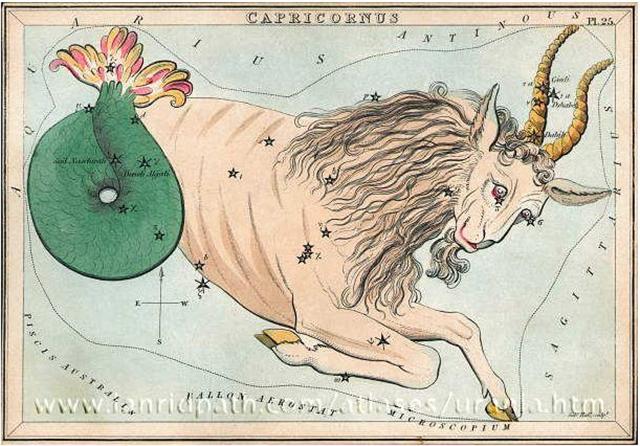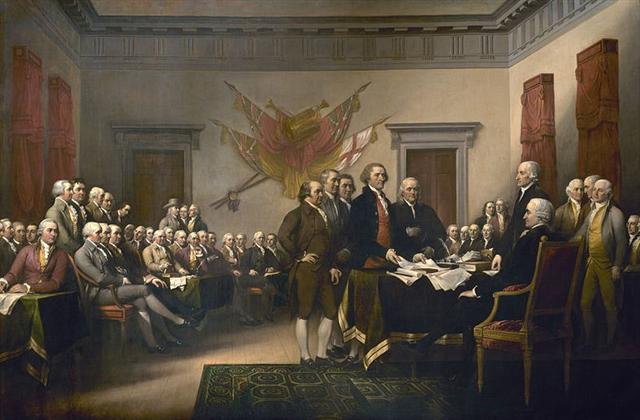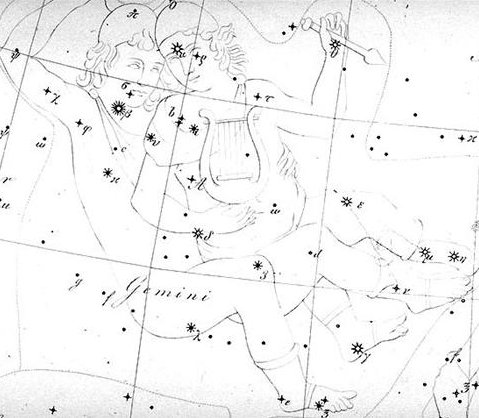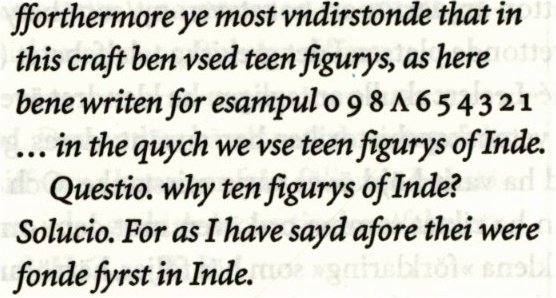287. The circle of the distribution of
right ascension lines in the Chinese
overview map below includes Signs:
For instance is the pair of lines at the
quincunx tent in Cancer defining a narrow time
space:
|
Last
4 of the 7 places which Makoi
saw by himself:
Possibly these
places were alluding also to the
change from the Julian spring
equinox to the Gregorian spring
equinox:
... When the Pope rearranged the
day for spring equinox from
number 84 ('March 25) to number
80 (ºMarch 21) the earlier
Julian structure was buried, was
covered up (puo). At the
same time the Pope deliberately
avoided to correct the flow of
Julian calendar days for what he
may have regarded as 4
unneccesary leap days prior to
the Council of Nicaea. Thus his
balance sheet for days was in
order. The day numbers counted
from the equinox were increased
with 4 and this was equal to
allowing the 4 'unneccessary'
leap days to remain in place.
But he had moved spring equinox
to a position which was 4 days
too early compared to the
ancient model
...
These '4 unneccessary leap days'
(prior to the Council of Nicaea)
were equal in number to the
precessional distance in time
between the Pope and the time of
rongorongo. The Gregorian
calendar could therefore be
easily understood by the Easter
Islanders. The Pope had created
a 'crooked calendar' but since
his time the precession had
fixed it
...
 |
|
MAY 25 (5-25) |
26 (*266) |
27 |
28 (348) |
 |
 |
 |
 |
|
Ga3-6 |
Ga3-7 |
Ga3-8 |
Ga3-9 (68) |
|
Āshleshā-9 (Embrace) /
Willow-24 (Stag)
π¹ Ursa Majoris,
δ Hydrae (129.6),
AL MINHAR AL SHUJĀ = σ Hydrae,
MUSEIDA = π² Ursae Majoris
(129.9)
RAS
ALHAGUE (α Ophiuchi) |
Al Nathrah-6 (Gap)
BEEHIVE (Exhalation of Piled-up
Corpses) = ε Cancri,
η Pyxidis (130.4),
XESTUS = ο Velorum
(130.5), ζ Pyxidis (130.7),
ASCELLUS BOREALIS = γ Cancri,
β Pyxidis (130.9) |
Extended Net-26a (Ox) /
Arkū-sha-nangaru-sha-shūtu-12
(Southeast Star in the Crab)
η Hydrae (131.0),
ASCELLUS AUSTRALIS = δ Cancri
(131.4),
KOO SHE (Bow and Arrow)
= δ Velorum
(131.6),
α
Pyxidis
(131.8),
ε Hydrae
(131.9) |
ι Cancri (132.0), ρ Hydrae
(132.4) |
|
July 28 |
29 (*130) |
30 |
31 (212) |
|
°July 24 |
25 |
26 (*127) |
27 (208) |
|
'July 1 |
2 |
3 (*104) |
4
(185) |
|
"June 17
Te Kioe Uri |
18 Te
Piringa Aniva |
19 (*90)
Te Pei |
Te
Maro
20 (171 = 185 - 14)
TE POU |
|
NAKSHATRA DATES: |
|
NOVEMBER 24 |
25 (*249) |
26 |
27 (331) |
|
ROTANEV
= β Delphini, ι
Delphini (312.3), τ Capricorni
(312.6), κ Delphini (312.7),
SVALOCIN = α Delphini,
υ Capricorni, υ Pavonis (312.8) |
μ²,
μ¹ Oct. (313.2),
DENEB
CYGNI (Tail of the Swan) = α Cygni
(313.5), β Pavonis (313.6), δ
Delphini (313.8) |
Al Sa’d al Bula'-21 (Good
Fortune of the Swallower) /
Dhanishta-24 (Most Famous) /
Girl-10 (Bat)
YUE
(Battle-Axe) = ψ Capricorni
(314.3),
GIENAH CYGNI = ε Cygni,
η Cephei (314.5), γ Delphini
(314.6), σ Pavonis (314.7),
ALBALI = ε Aquarii
(314.8) |
BATEN
ALGIEDI (Belly of the Goat) = ω Capricorni
(315.8) |
|
Jan 27 |
28 (393) |
29 (*314) |
30 |
|
°Jan 23 |
24 |
25 (*310) |
26 |
|
'Dec 31 |
'Jan 1 |
2 |
3 (*288) |
|
"Dec 17 |
18 |
19 (*273) |
20 (354) |
|
When it grew light, Makoi
arose again. He went off to
further explore the area. He
went along and came to the 'dark
rat'. He looked around and said:
'Here we are at the dark rat of
Hau Maka'. He gave
it the name Te Kioe Uri A Hau
Maka. He went on and came to
Te Piringa Aniva. When he
arrived there, he looked around
and gave the name Te Piringa
Aniva. He went on and came
to Te Pei, looked around,
and said, 'Here it is!' So he
gave the name Te Pei A Hau
Maka. He went on, all alone
he went on, and came to Te
Pou. When he arrived there,
he looked around and again said,
'Here it is!' and gave the name
Te Pou A Hau Maka. |
|
For some reason nothing was said
about Te Manavai, which
in the journey of the kuhane
came between Poko Uri and
Te Kioe Uri.
... The dream soul climbed
up and reached the rim of
the crater. As soon as the
dream soul looked into the
crater, she felt a gentle
breeze coming toward her.
She named the place 'Poko
Uri A Hau Maka O Hiva'.
The dream soul continued her
search for a residence for
King Matua.
The dream soul of Hau
Maka reached (the
smaller crater) Manavai
and named the place 'Te
Manavai A Hau Maka O Hiva'.
The dream soul went on and
reached Te Kioe Uri.
She named the place 'Te
Kioe Uri A Hau Maka O Hiva'
...
... Manavai
Hollow
where rainwater accumulates;
anciently, small, round gardens,
preferably situated in low shady
spots, where the mahute
tree was grown. Vanaga. 1.
Brain. 2. Valley, ravine, river,
torrent, brook; manavai miro,
orchard, Mq.: manavai,
valley,
brook.
Ta.: anavai, river,
brook. It scarcely appears that
these are fully coordinate. In
Tahiti anavai has a clear
etymology, ana
meaning the bed of a stream. In
Rapanui and in the Marquesas
mana most readily associates
with maga, as water in a
forked bed. Churchill
...
However, Manuscript E seems to
offer an explanation in the way
Makoi remembered how he
documented the name: ... I wrote
(ta) Te Manavai A Hau
Maka on the surface of a
banana leaf (kaka), and
this is how I left it ... |
Ira
did not like the way Makoi had given
names when he was out on his own. He had
written Te Manavai A Hau Maka on a
banana leaf, which suggested the form of the
Moon. The Chinese list has Hydra where we
otherwise would have expected Leo. But
Makoi was destined to remain on Easter
Island when the Explorers later on went
home.
We can therefore understand how it could be
suitable to use not the dates at the time of
the Bull but the dates at the time of
Bharani, when day 354 ("December 20) was at
the Full Moon and Makoi named "June
20 (354 - 183 = 171) Te Pou A Hau Maka
- the Pillar - also a name for Sirius, but
that power
came 10 days later.
... He got up, the path went uphill, and he
came (back) to the house. It was dark when
he reached the house. When he came to the
yam plantation of Kuukuu, he sat
down. Night was falling.
Ira
asked Makoi the following question:
'How did you fare when you wandered, when
you went searching, when you found yourself
on the path of the dream soul of the
father?' Makoi replied, 'There are
indeed all those places. I did not forget
them at all (? kai viri kai viri)
when I saw them (text corrected, i-ui-nei).
I alone saw no fewer than four of my [sic!]
places, and I returned here only because
night was falling.'
Then Ira spoke again: 'How did you
name them, last-born?' Makoi
replied, 'This is what happened, this is how
I gave the names. I wrote (ta) Te
Manavai A Hau Maka on the surface of a
banana leaf (kaka), and this is how I
left it.' This is how Makoi
remembered it.
No sooner had he said this, when Ira
gew angry and quarrelled with Makoi.
He said the following (to him): 'You did not
pay attention, last-born, and you did not
give the (full) name. This is how it should
be: the
Manavai of
Hau Maka of Hiva,
in memory (mo aringa ora) of the
father, of his dream soul.'
Makoi
replied, 'In Hiva the land belongs to
him - this land here is mine, not his!'
[E:21] ...
Instead a more convenient time-space to use
was that of Bharani, where *14 right
ascension days had to be added in order to
reach the creation of Julius Caesar and *41 in order
to reach the time of rongorongo.
... The Arab astronomers had
evidently decided to use *41.4 (→ 414 = 14 *
29½ + 1) as the cardinal point (the Heart)
of that part of the year which ended at the
hips (Coxa) of Leo:
|
|
|
Delta |
δ Andromedae |
8.4 |
March 29 (88) |
|
0 |
- |
Zero |
η Andromedae |
11.4 |
April 1 (91) |
|
|
|
Whip |
Cih (γ Cassiopeiai) |
12.4 |
April 2 (92) |
|
1 |
Al Sharatain |
Pair of Signs |
β Arietis (Sheratan),
γ (Mesarthim) |
27.4 |
April 17 (107) |
|
|
|
Musca Borealis |
35 (Head of the Fly), 39
(Kaffaljidhma), and
41 Arietis (Bharani) |
41.4 |
May 1 (121) |
|
2 |
Al Dabarān |
Follower |
α Tauri (Aldebaran), θ¹, θ²´,
γ (Hyadum I),
δ (Hyadum II), ε (Ain) |
63.4 |
May 23 (143) |
|
3 |
Al Hak'ah |
White Spot |
λ
Orionis (Heka),
φ¹,
φ² |
83.4 |
June 12 (163) |
|
4 |
Al Han'ah |
Brand |
γ Gemini (Alhena), μ (Tejat
Posterior), ν,
η (Tejat Prior),
ξ (Alzirr) |
93.4 |
June 22 (173) |
|
5 |
Al Dhirā' |
Forearm |
α Gemini (Castor),
β (Pollux) |
113.4 |
July 12 (193) |
|
6 |
Al Nathrah |
Gap |
ε Cancri (Beehive) |
130.4 |
July 29 (210) |
|
7 |
Al Tarf |
End |
ξ
Cancri,
λ
Leonis (Alterf) |
143.4 |
Aug 11 (223) |
|
8 |
Al Jabhah |
Forehead |
η Leonis (Al Jabhah),
α (Regulus), ζ (Adhafera), γ
(Algieba) |
152.4 |
Aug 20 (232) |
|
9 |
Al Zubrah |
Mane |
δ
Leonis (Zosma),
θ
(Coxa) |
169.4 |
Sept 6 (249) |
|
10 |
Al Sarfah |
Turn |
β Leonis (Denebola) |
178.3 |
Sept 15 (258) |
|
11 |
Al Áwwā' |
Barker |
β (Alaraph), η (Zaniah),
γ (Porrima),
δ (Minelauva), ε Virginis
(Vindemiatrix) |
191.5 |
Sept 28 (271) |
Julius Caesar had arranged the
Belly of the Hairy Goat (Baten Algi edi,
ω)

to be at the opposite side of day 185 ('July
4).

... July 4 is the 185th day
of the year (186th in leap years) in the
Gregorian calendar. There are 180 days
remaining until the end of the year. The
Aphelion, the point in the year when the
Earth is farthest from the Sun, occurs
around this date ...
... The Declaration of
Independence is a statement adopted by the
Continental Congress on July 4, 1776, which
announced that the thirteen [13] American
colonies, then at war with Great Britain,
regarded themselves as independent states,
and no longer a part of the British Empire
...
... It might be argued that
from 1776 to the time I have suggested for
the G text the precession of the equinoxes
must have moved ω Gemini ahead ... and that
the date of the Declaration of Independence
just by coincidence happens to be July 4.
However, the aphelion is moving in
the year:
... Currently, the annual
perihelion happens at about 14 days after
the December Solstice, thus on or about
January 4. At perihelion, the Earth is about
... 147,098,070 kilometers ... from the Sun.
(The eccentricity of the orbit also varies
slowly over many millennia.) Likewise, the
annual aphelion currently occurs in early
July, about 14 days after the June Solstice.
At this time, the distance of the aphelion
is currently about ... 152,097,700
kilometers ... On a very long time scale,
the dates of the perihelion and of the
aphelion progress through the seasons, and
they make one complete cycle in 22,000 to
26,000 years ...
|
APRIL 30 |
MAY 1 (*41) |
2 |
3 |
4 |
5-5 (125) |
 |
 |
 |
 |
 |
 |
|
Ga2-10 |
Ga2-11
(41) |
Ga2-12 |
Ga2-13 |
Ga2-14 |
Ga2-15 |
|
ADARA (Virgins) = ε Canis Majoris
(104.8) |
ω Gemini
(105.4),
ALZIRR (Button) = ξ Gemini
(105.7),
MULIPHEIN (Oaths) = γ Canis Majoris
(105.8),
MEKBUDA (Contracted) = ζ Gemini
(105.9) |
7h (106.5)
no star listed (106) |
WEZEN (Weight) = δ Canis Majoris
(107.1), τ Gemini (107.7), δ
Monocerotis (107.9) |
no star listed (108) |
λ Gemini (109.4),
WASAT (Middle) = δ Gemini
(109.8) |
|
July 3 |
4
(aphelion) |
5 (186) |
6 |
7 |
8 |
|
ºJune
29 (180) |
Sirius |
ºJuly 1 |
2 |
3 |
4 |
|
'June 6 |
7 (*78) |
8 |
9 |
10 (161) |
11 |
|
...
The month, which takes its name from
Juppiter the oak-god, begins on June
10th and ends of July 7th. Midway
comes St. John's Day, June 24th, the
day on which the oak-king was
sacrificially burned alive. The
Celtic year was divided into two
halves with the second half
beginning in July, apparently after
a seven-day wake, or funeral feast,
in the oak-king's honour ... |
|
"May 23 |
24 (*64) |
25 |
26 |
27 |
28 (148) |
... A 'new land' was 'born'
by the Declaration of Independence, it was
drawn up (like the Declaration itself) in
July 4 (day number 186 because it was a leap
year) ...

The creators of Manuscript E
should have been aware of when the Sun was
as far away as possible, and the
days for their independence from the Sun and
his calendar - created north of the equator (initially by Caesar)
- should therefore be
documented by Makoi when he went out on his own
naming Te Pou not at JUNE 30 but at
Te Maro 20 when Baten Algiedi was at the
Full Moon. 'July 4 (185) was a day of Saturn
(Makoi) and his Te Pou A Hau Maka
(omitting O Hiva) was the 7th
kuhane station on the island proper.
MAY 1 (121) + 64 = 185 (July
4) and 185 - 27 = 158 ('June 7) = 14 + 144
("May 24).
... My calculations, though,
are not of much value per se, because
the dates for the 'helions' wobble:
|
Year |
Perihelion |
Aphelion |
|
Date |
Time |
Date |
Time |
|
2007 |
January 3 |
19:43 |
July 6 |
23:53 |
|
2008 |
January 2 |
23:51 |
July 4 |
07:41 |
|
2009 |
January 4 |
15:30 |
July 4 |
01:40 |
|
2010 |
January 3 |
00:09 |
July 6 |
11:30 |
|
2011 |
January 3 |
18:32 |
July 4 |
14:54 |
|
2012 |
January 5 |
00:32 |
July 5 |
03:32 |
|
2013 |
January 2 |
04:38 |
July 5 |
14:44 |
|
2014 |
January 4 |
11:59 |
July 4 |
00:13 |
|
2015 |
January 4 |
06:36 |
July 6 |
19:40 |
|
2016 |
January 2 |
22:49 |
July 4 |
16:24 |
|
2017 |
January 4 |
14:18 |
July 3 |
20:11 |
|
2018 |
January 3 |
05:35 |
July 6 |
16:47 |
|
2019 |
January 3 |
05:20 |
July 4 |
22:11 |
|
2020 |
January 5 |
07:48 |
July 4 |
11:35 |
In such circumstances the
magic of numbers surely will take over ...
... From the outset,
Americans celebrated independence on July 4,
the date shown on the much-publicized
Declaration of Independence, rather than on
July 2, the date the resolution of
independence was approved in a closed
session of Congress. Historians have long
disputed whether Congress actually signed
the Declaration of Independence on July 4,
even though Thomas Jefferson, John Adams,
and Benjamin Franklin all later wrote that
they had signed it on that day. Most
historians have concluded that the
Declaration was signed nearly a month after
its adoption, on August 2, 1776, and not on
July 4 as is commonly believed ...

|










